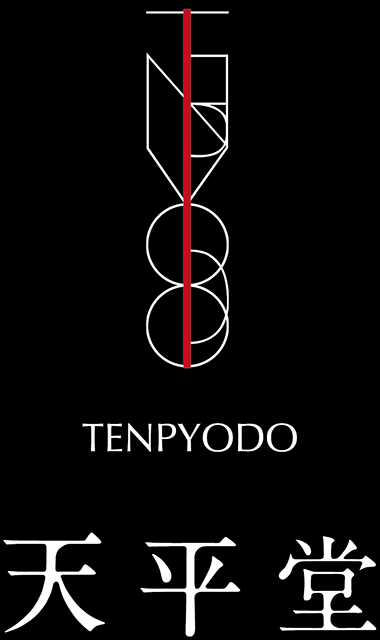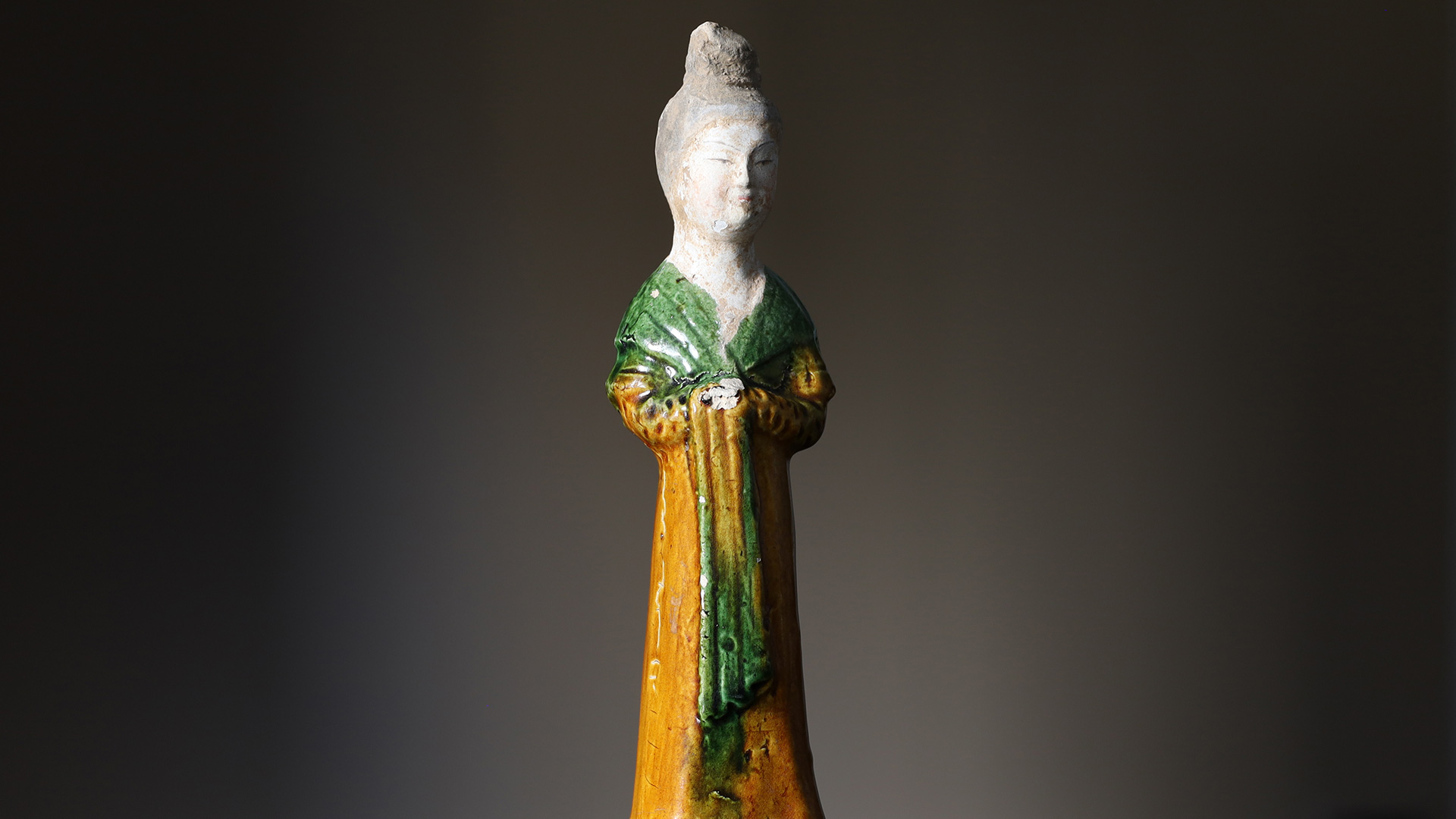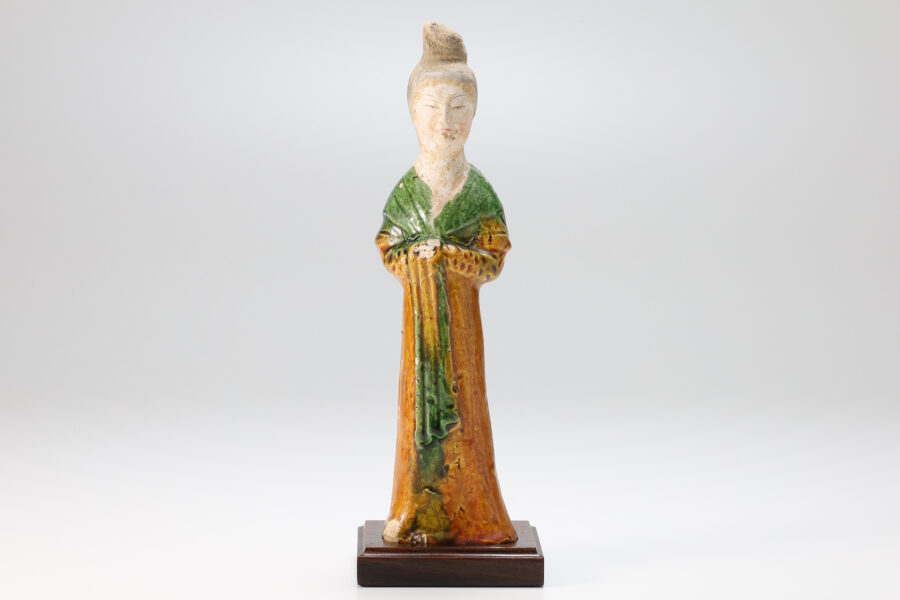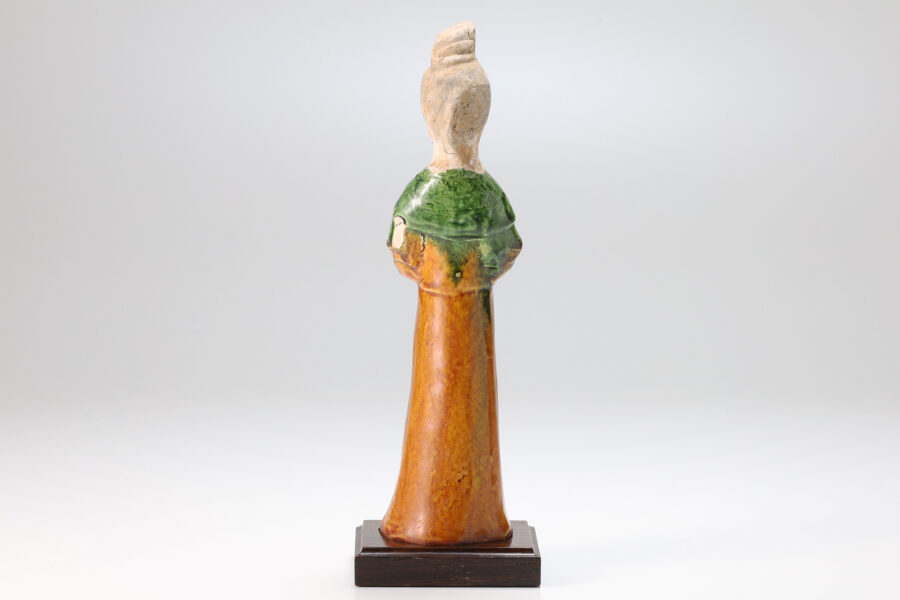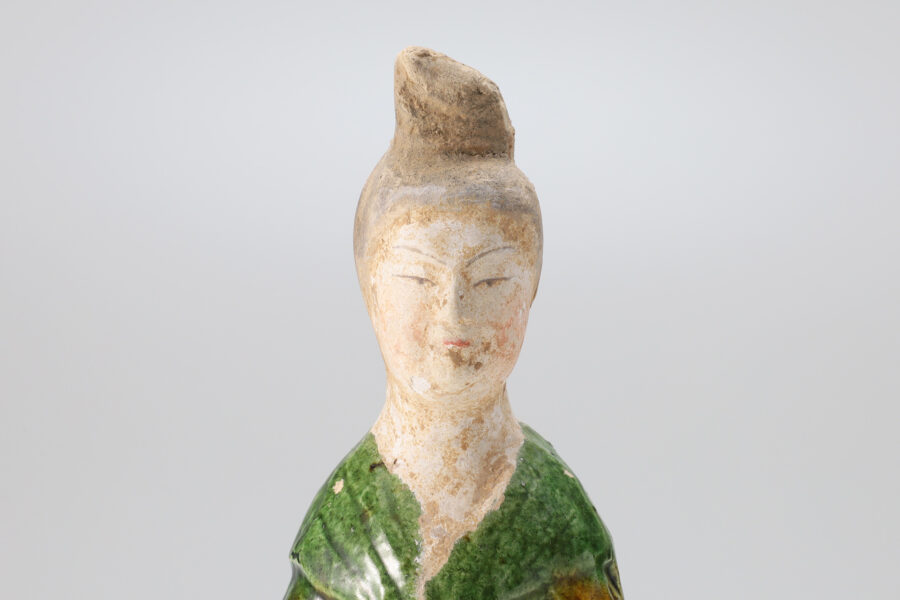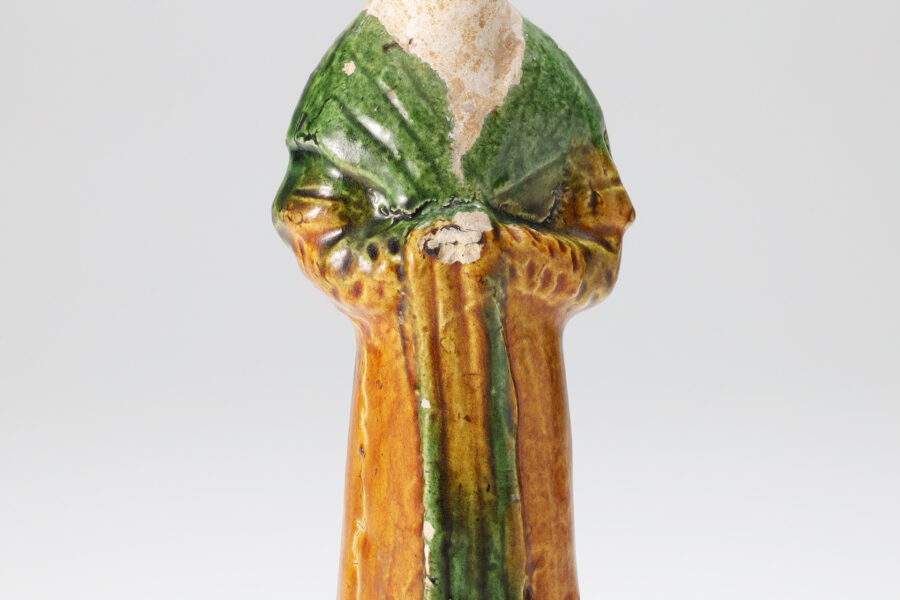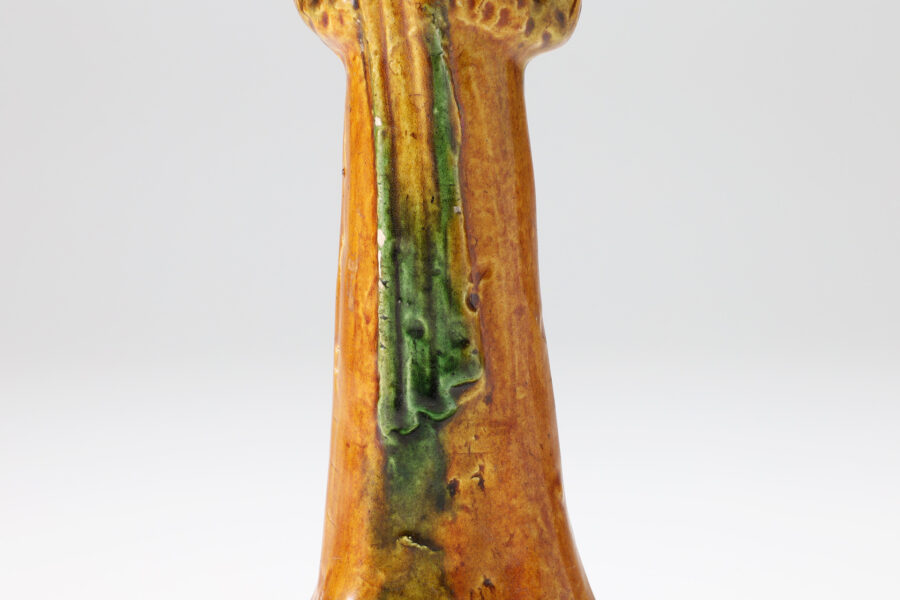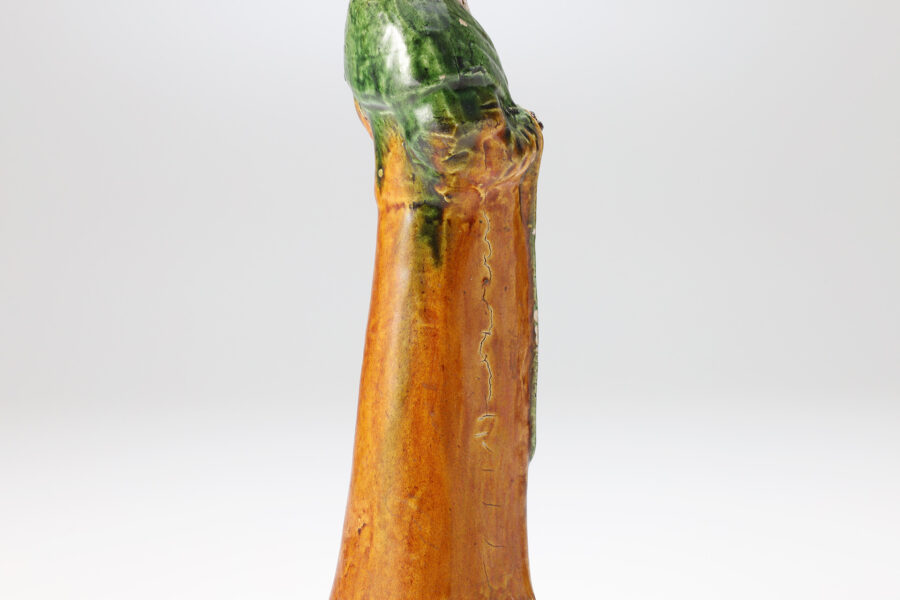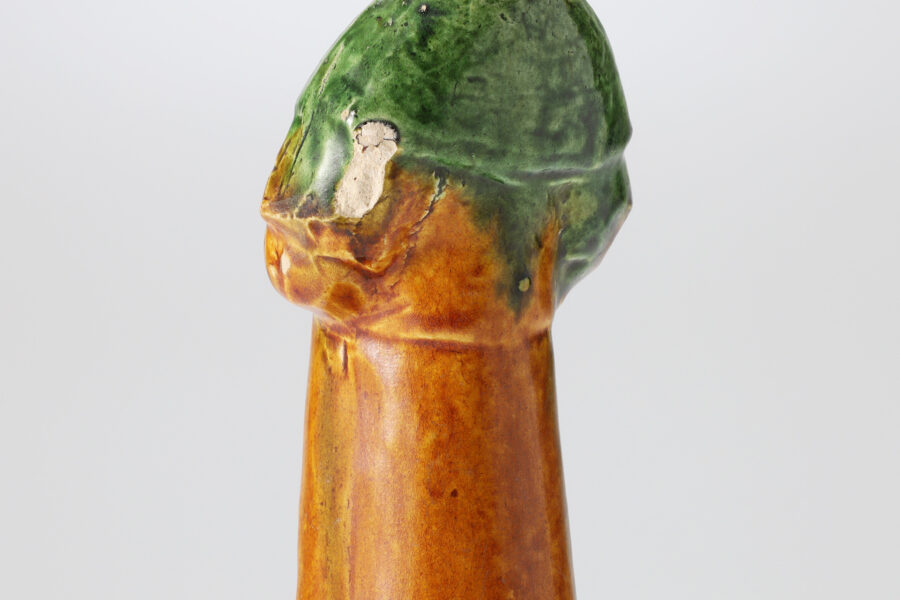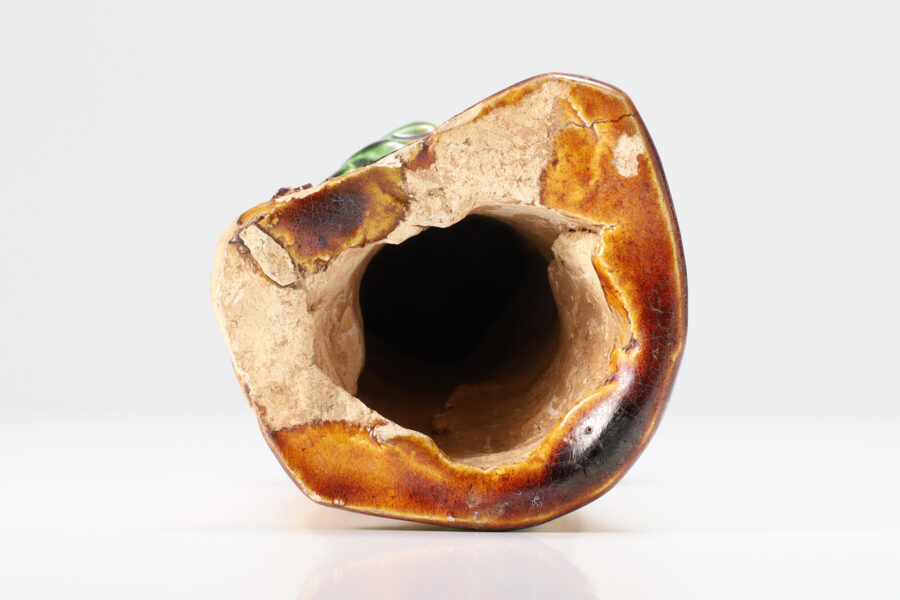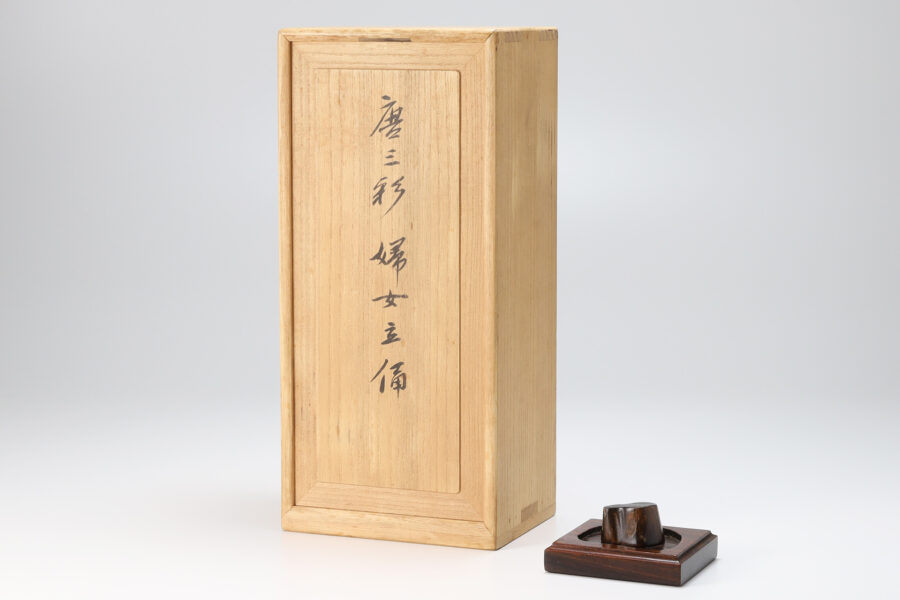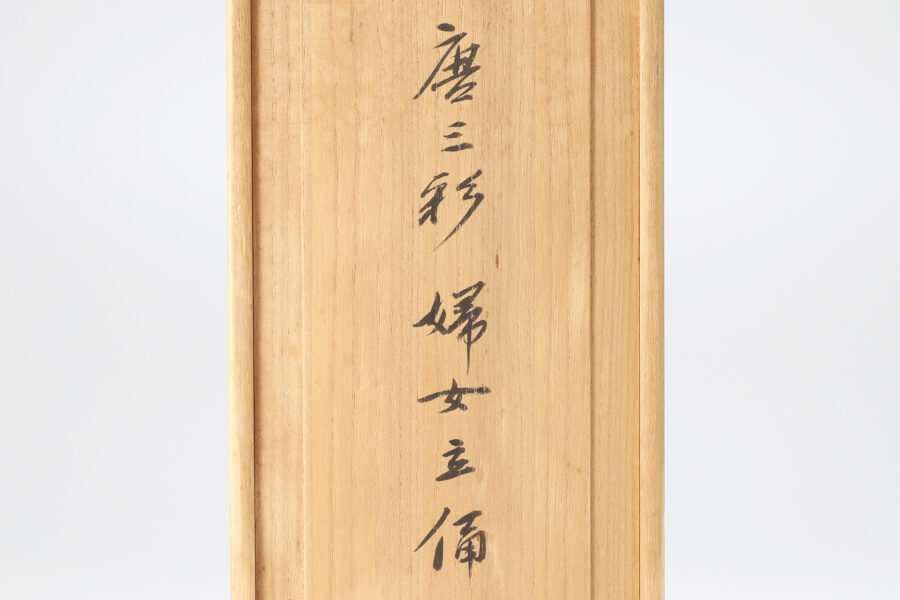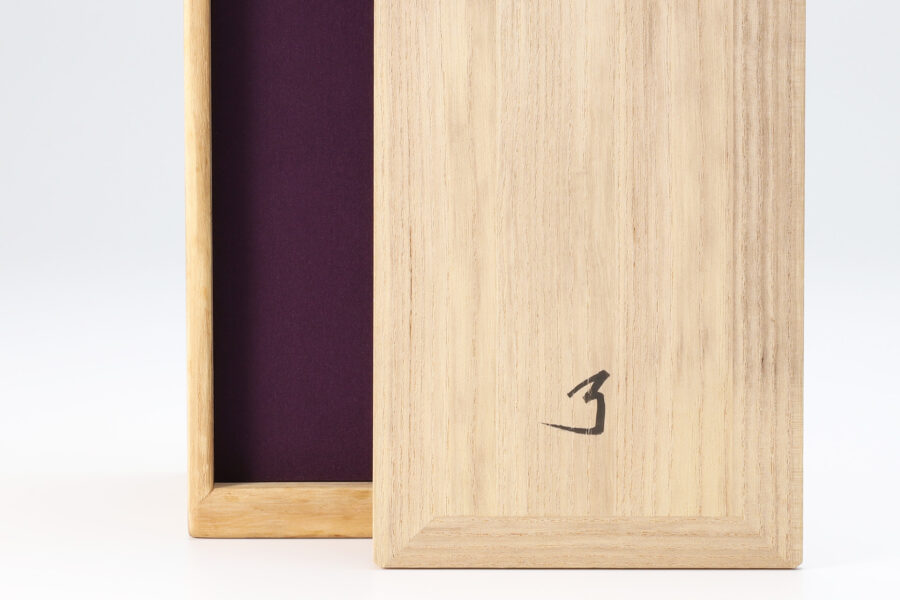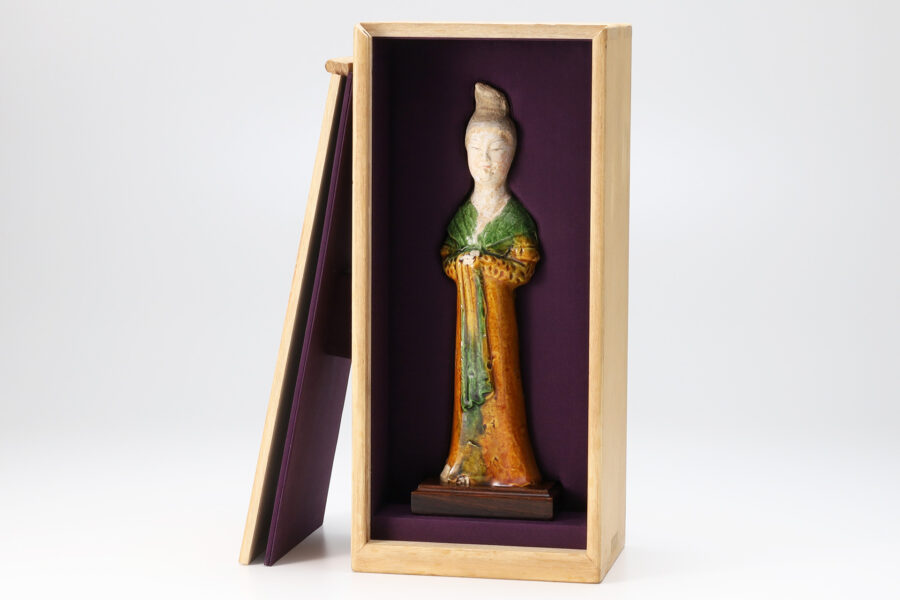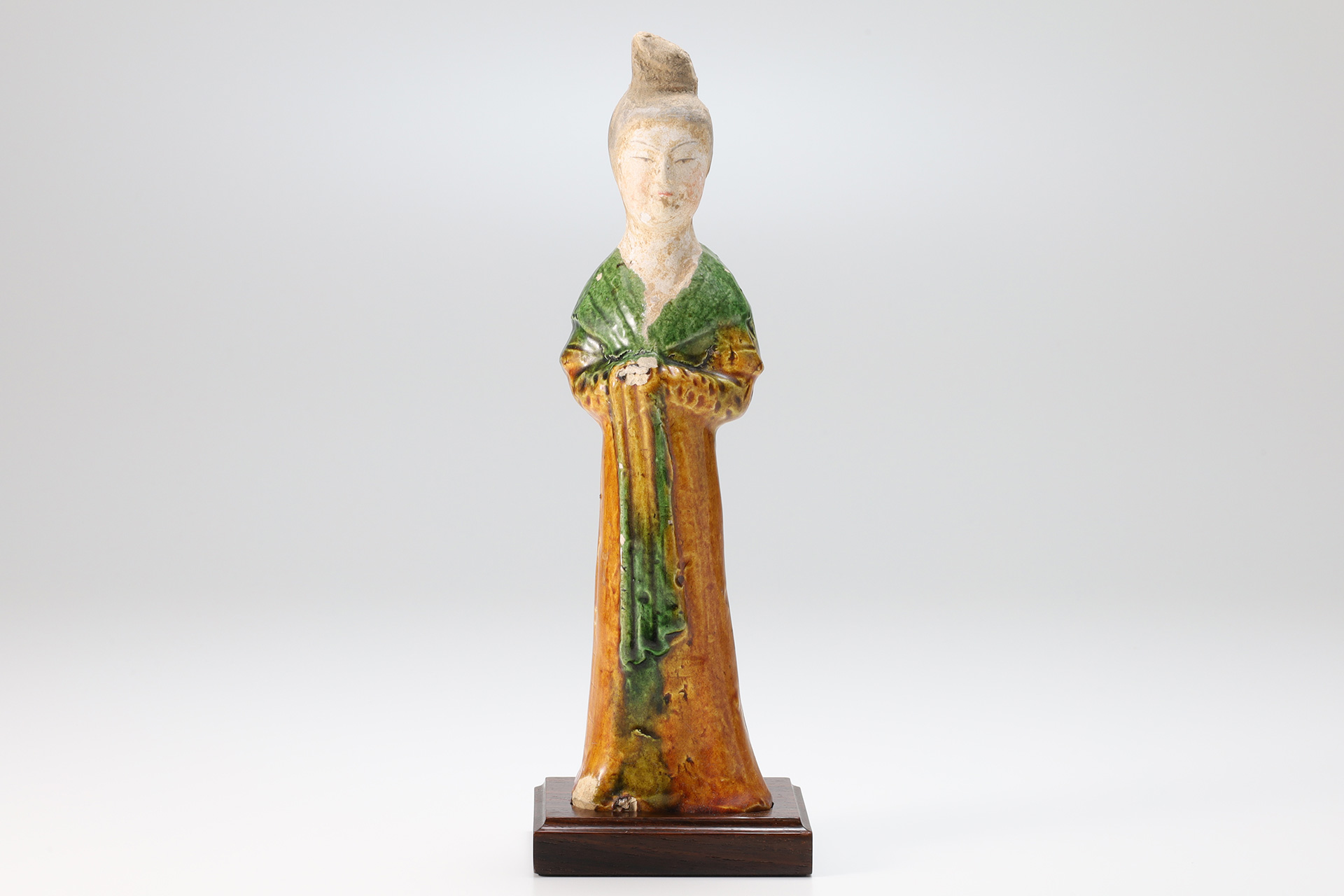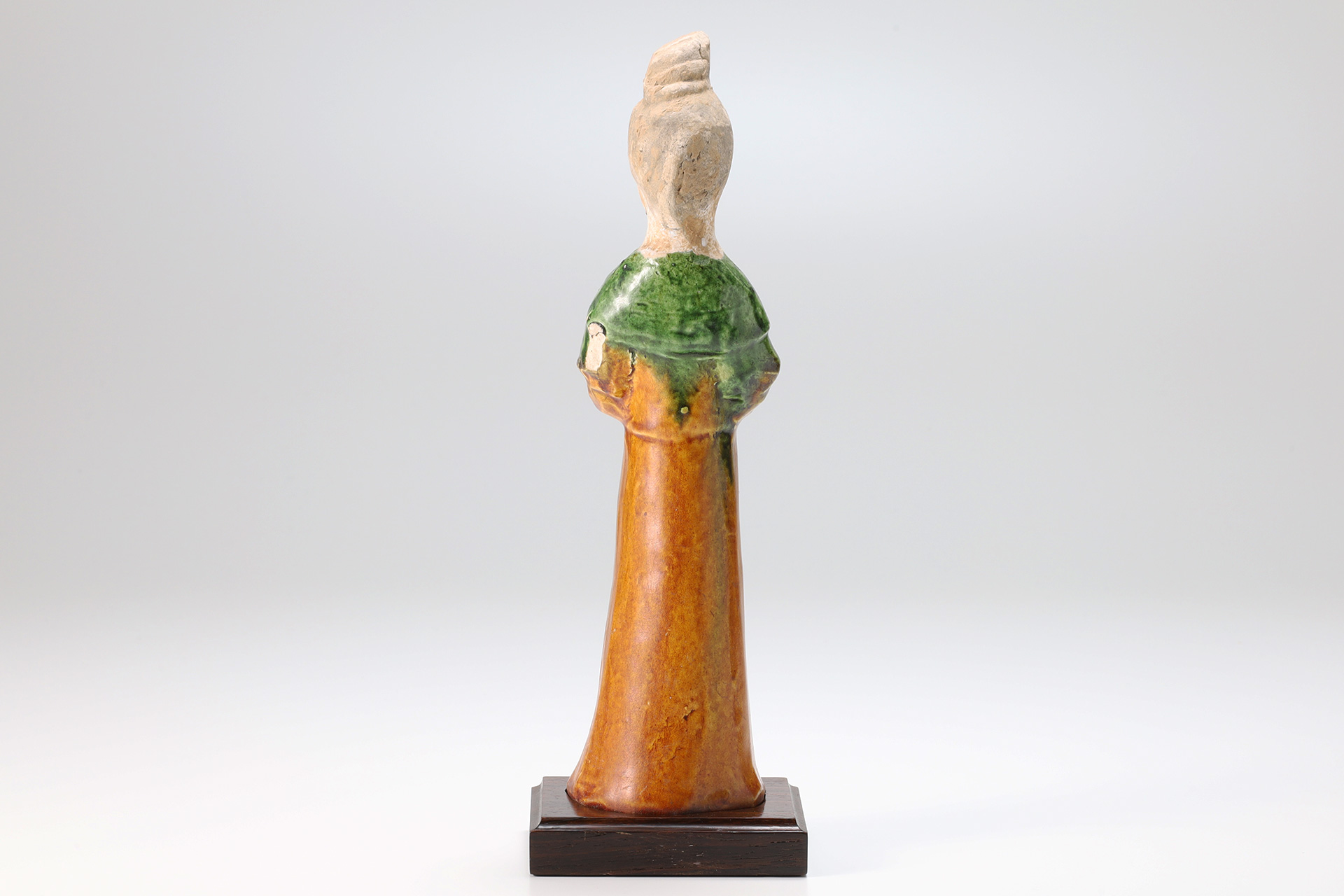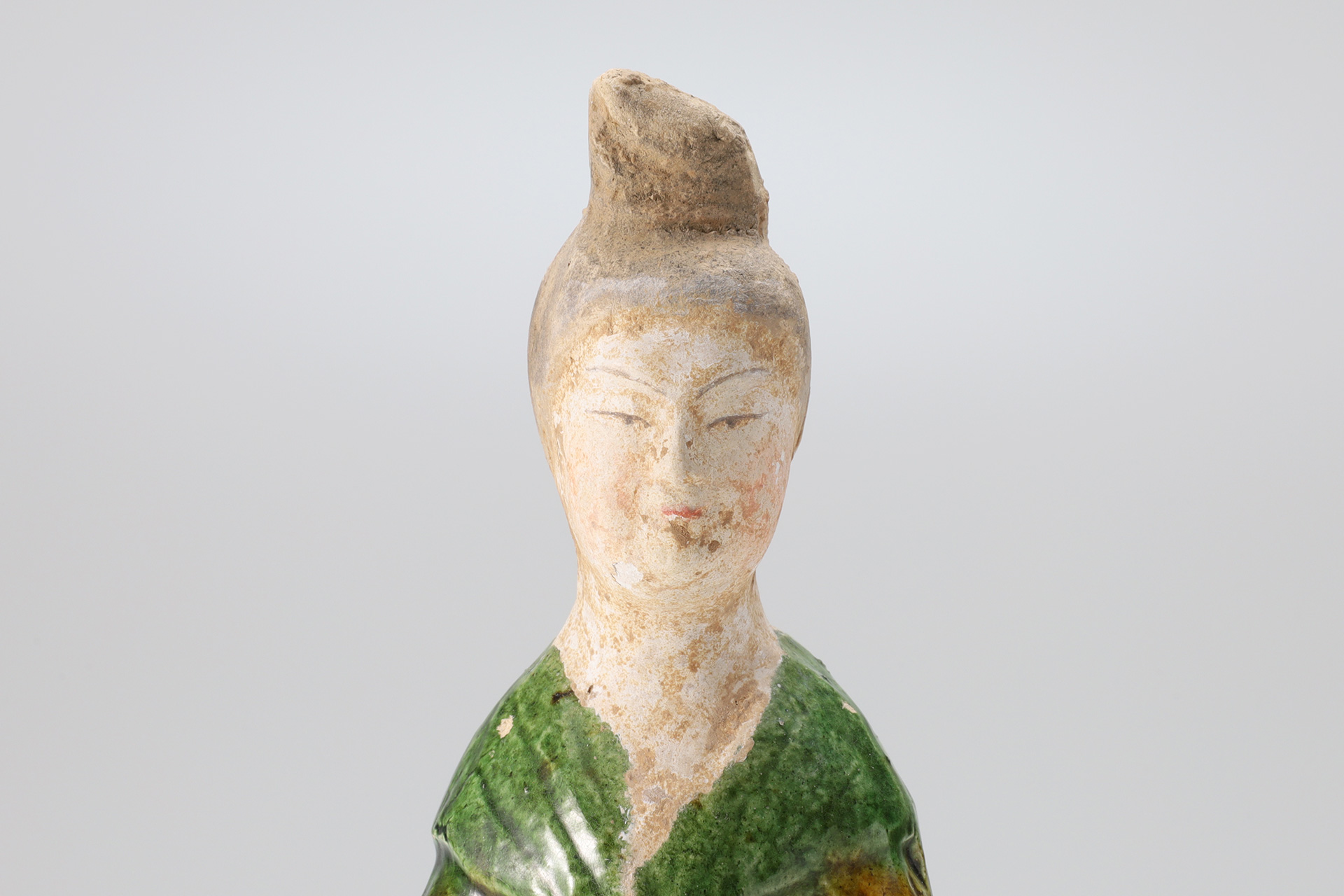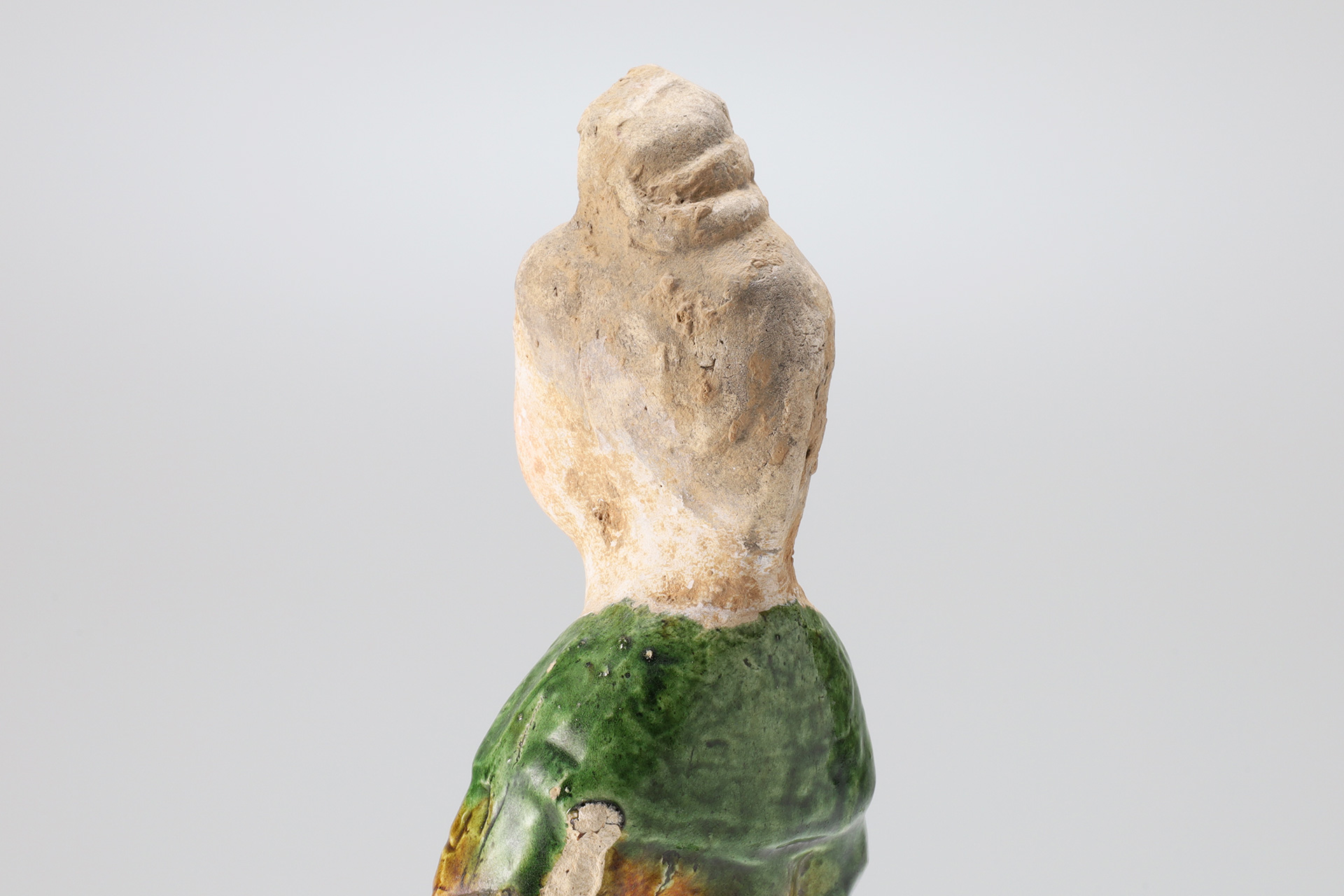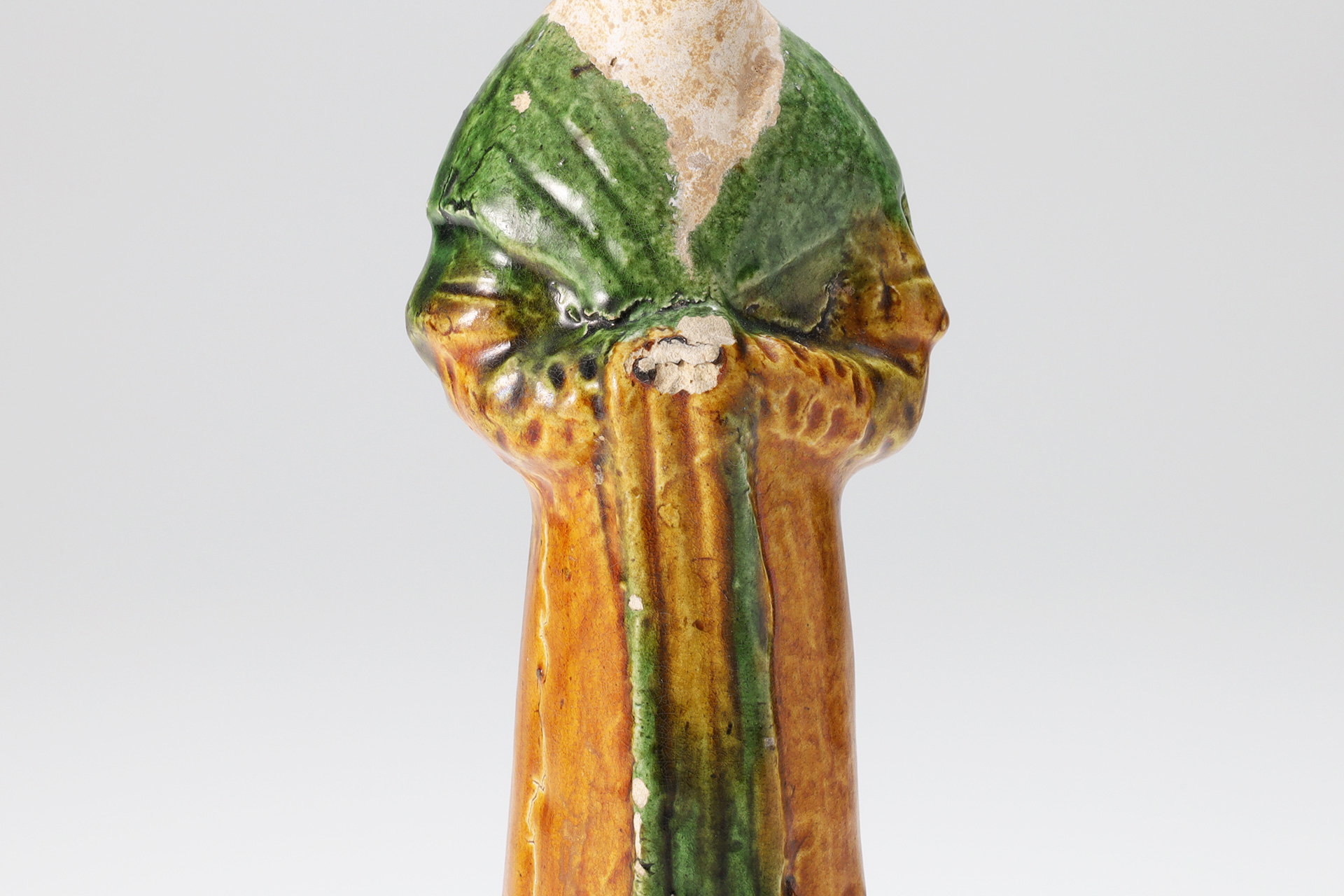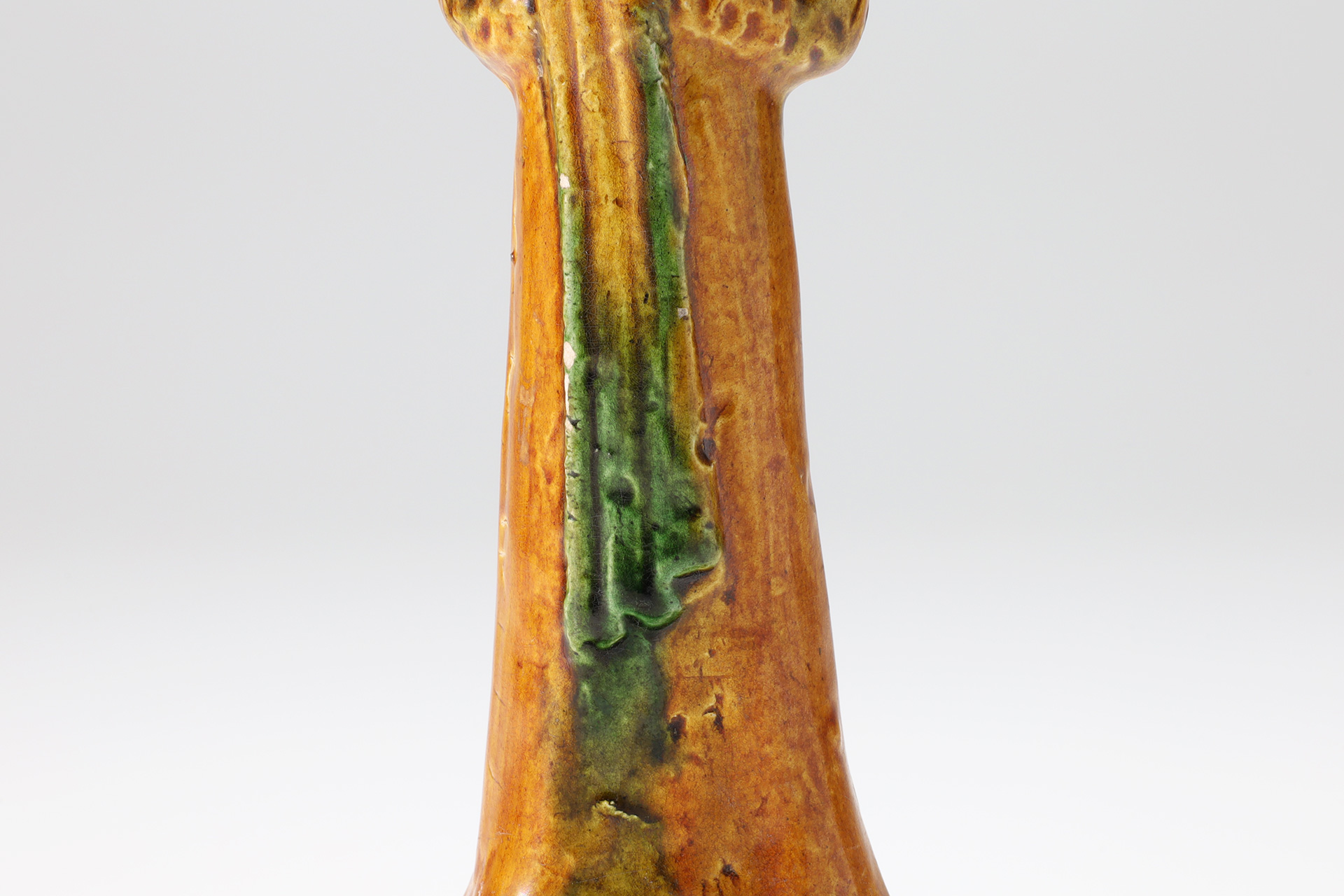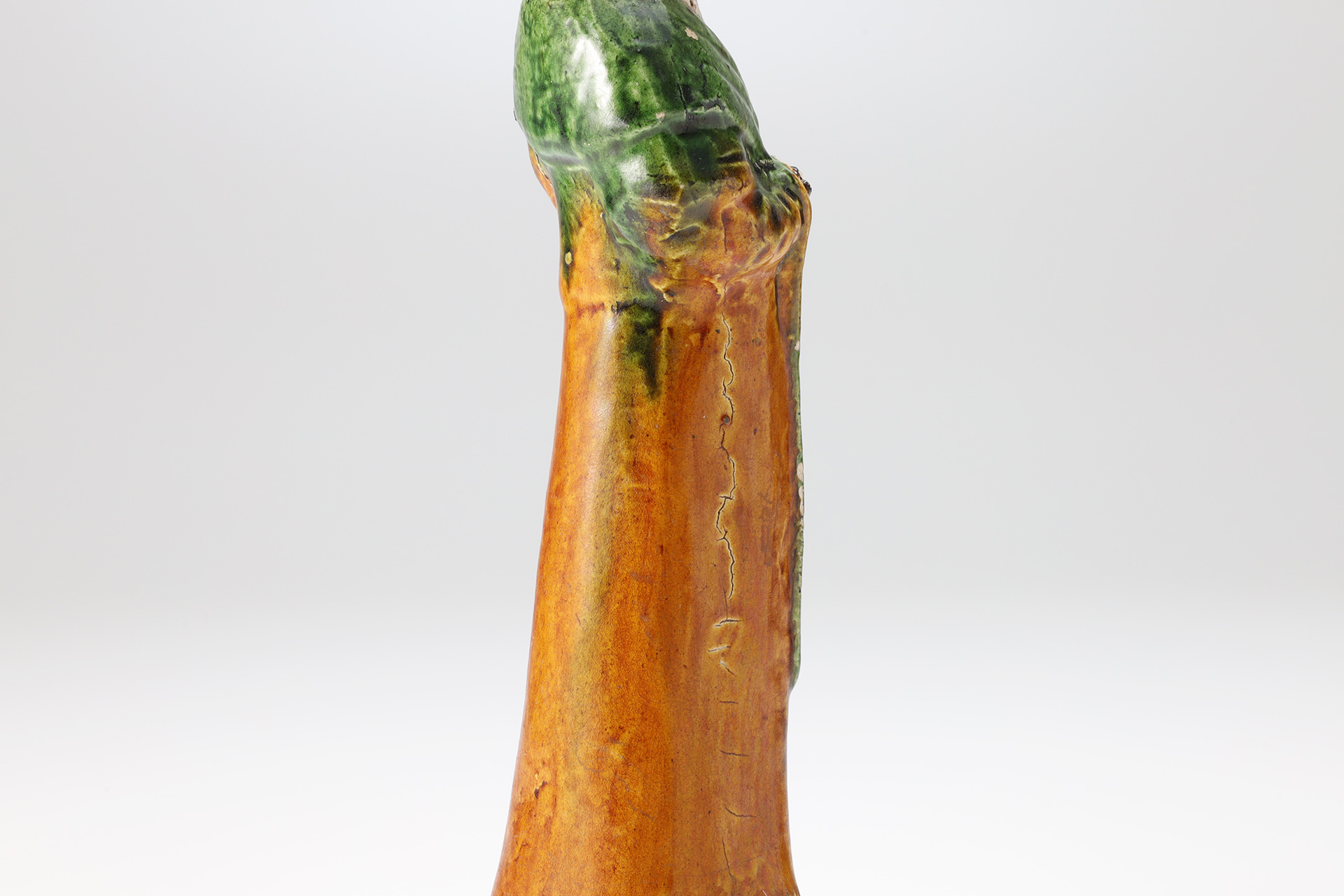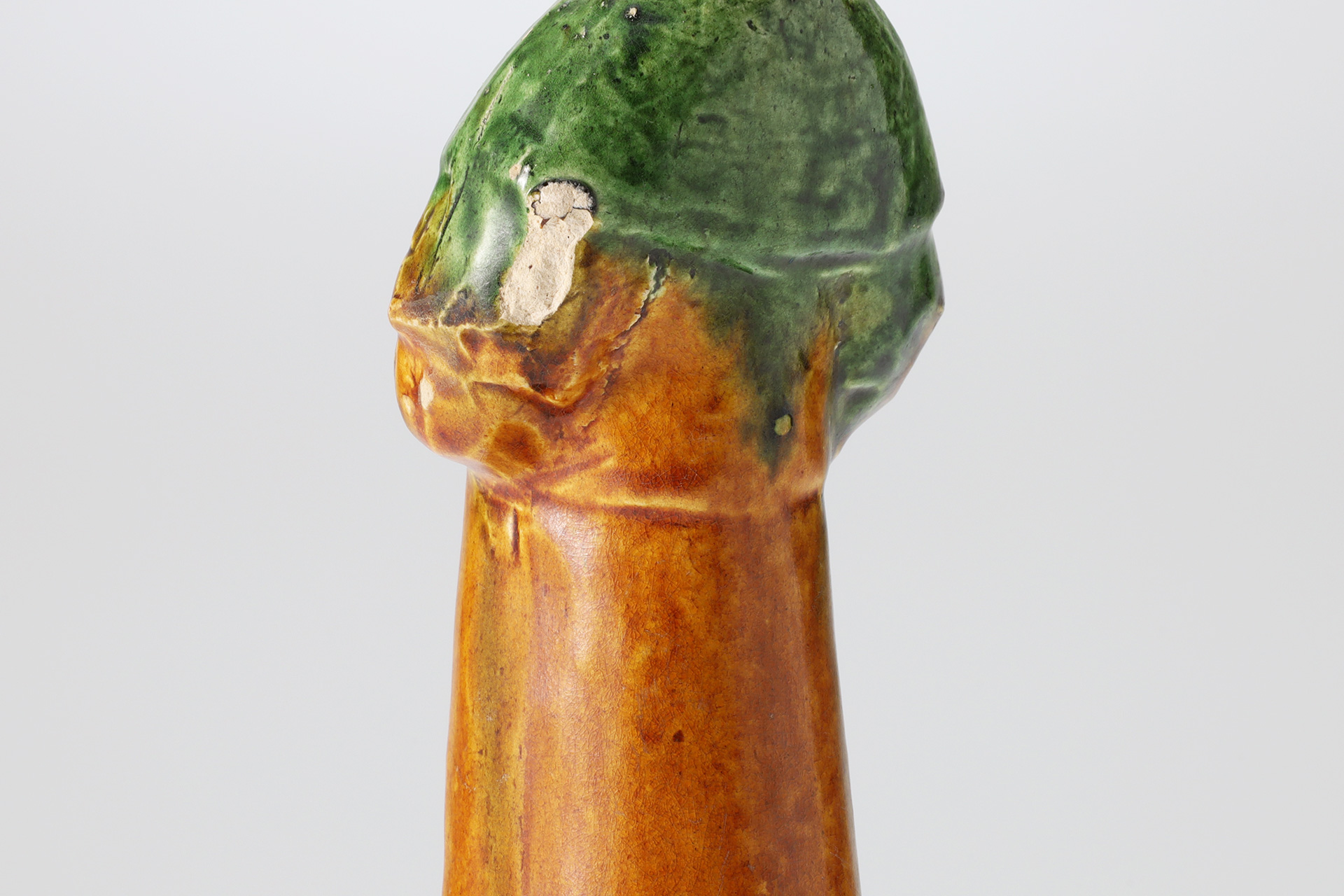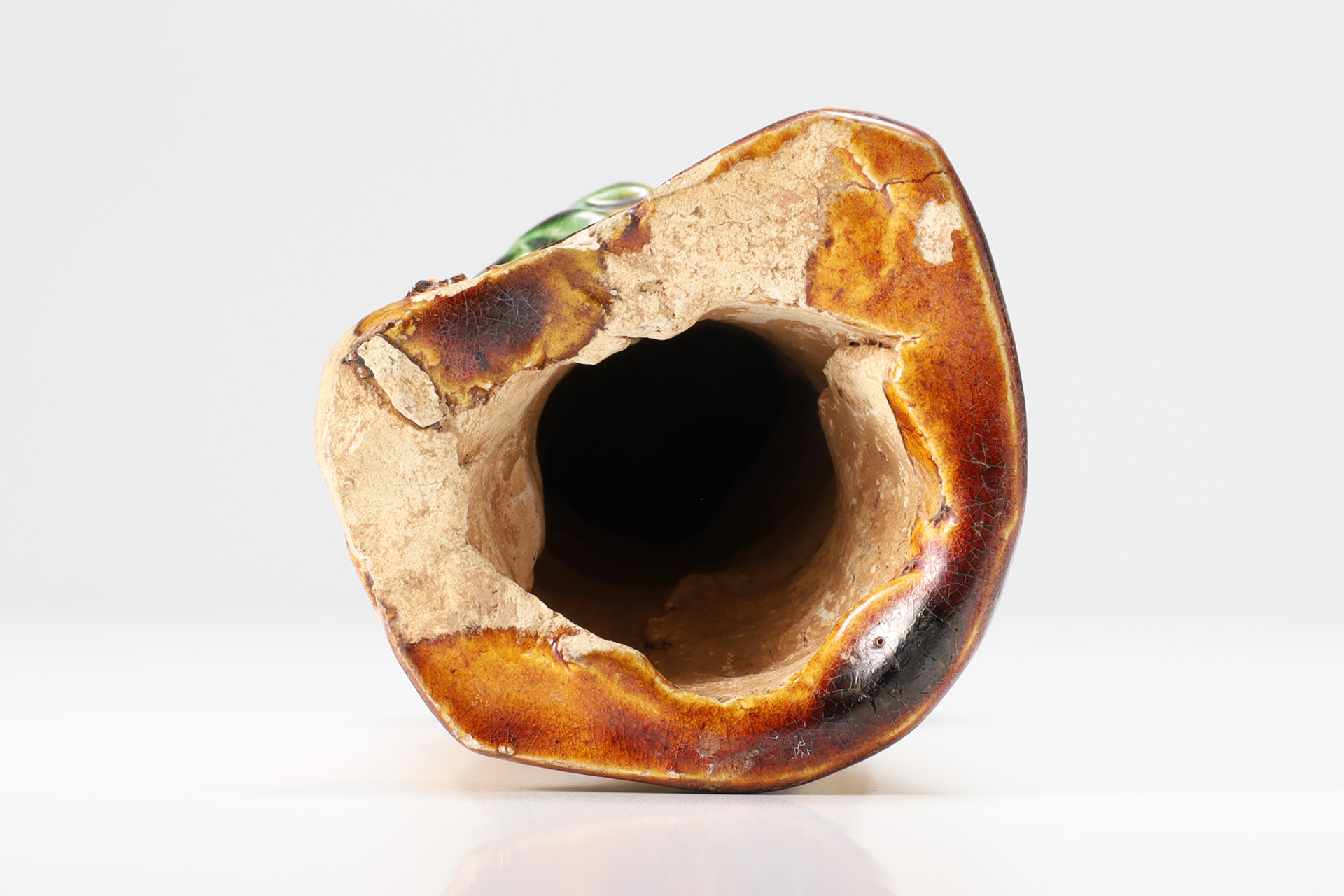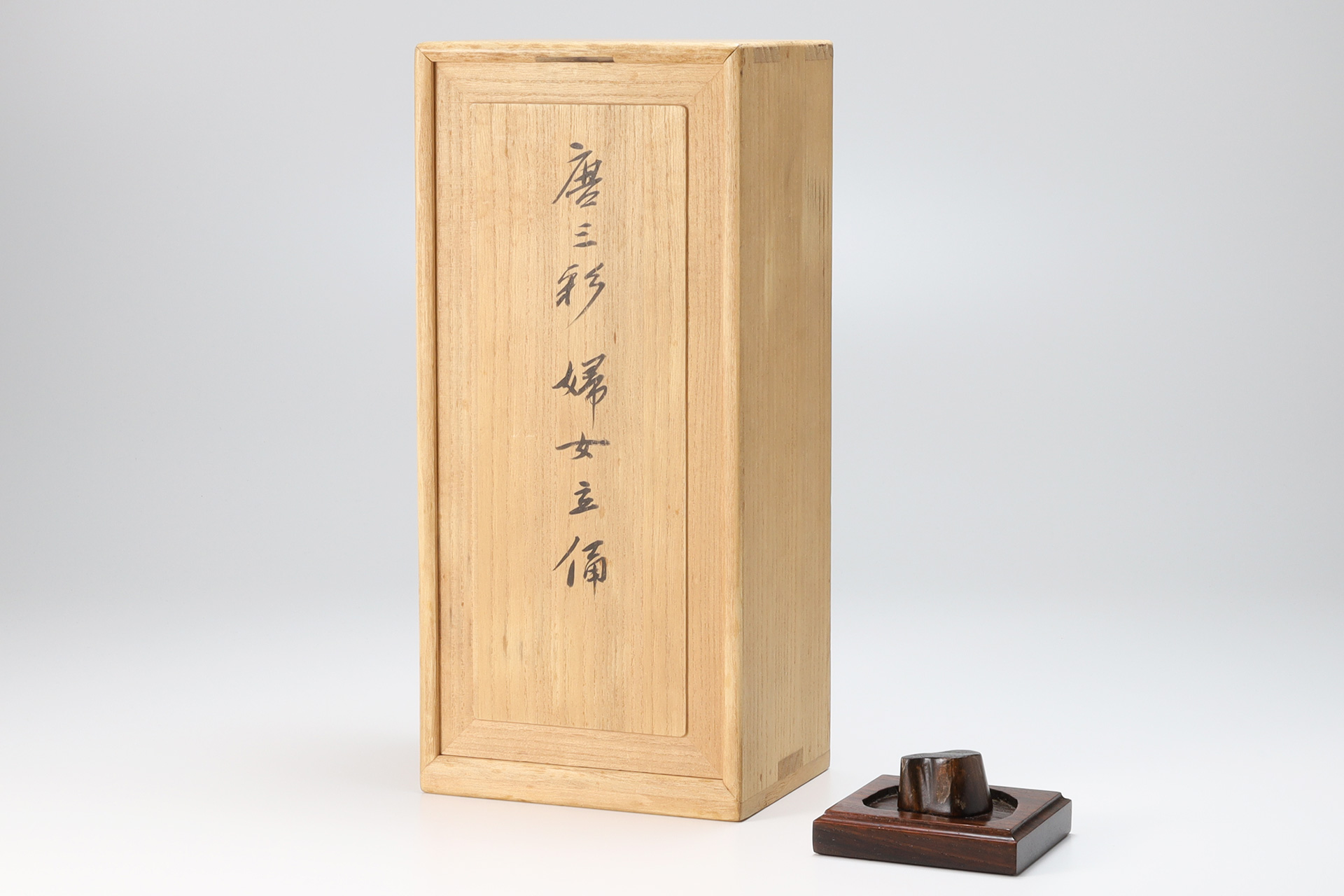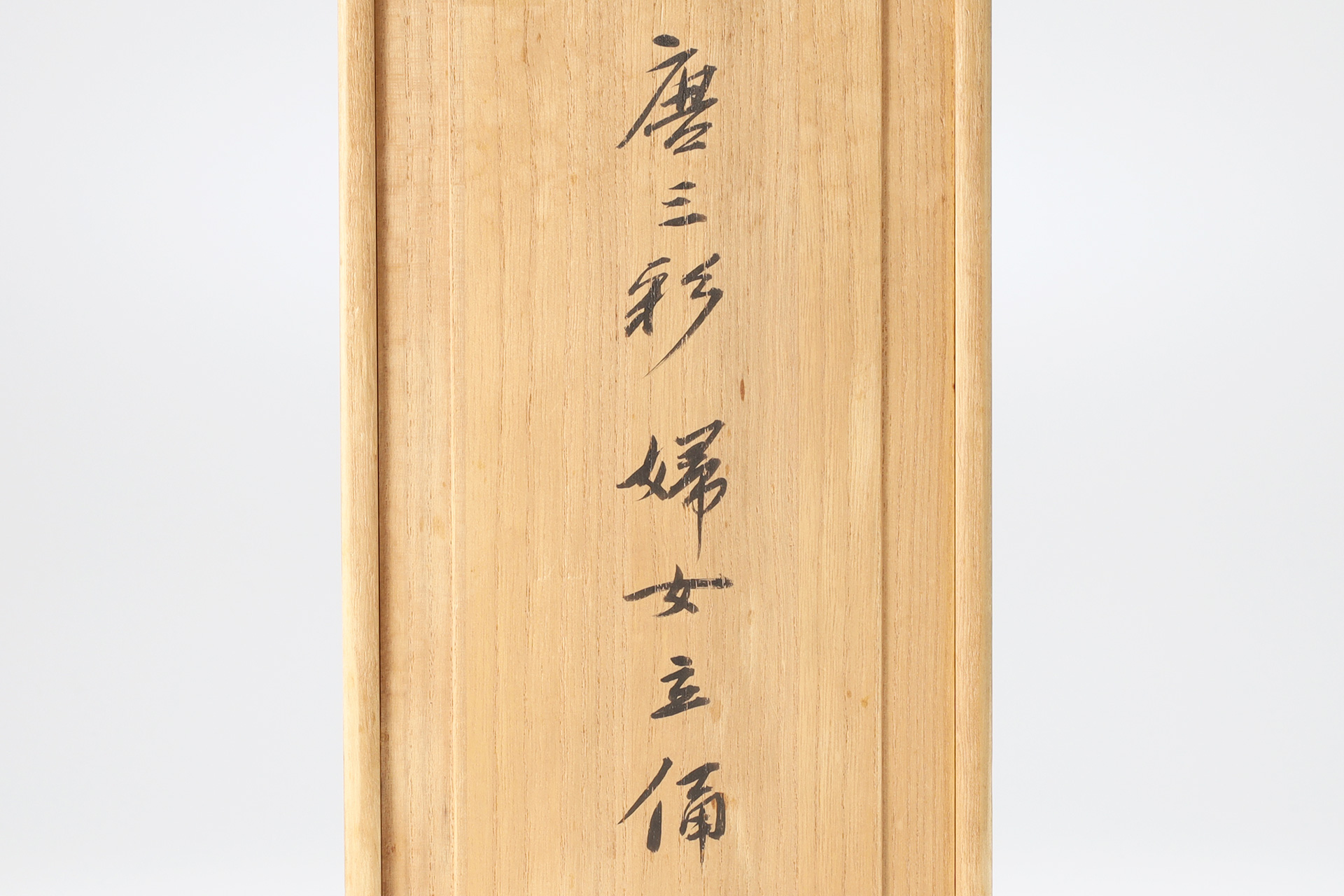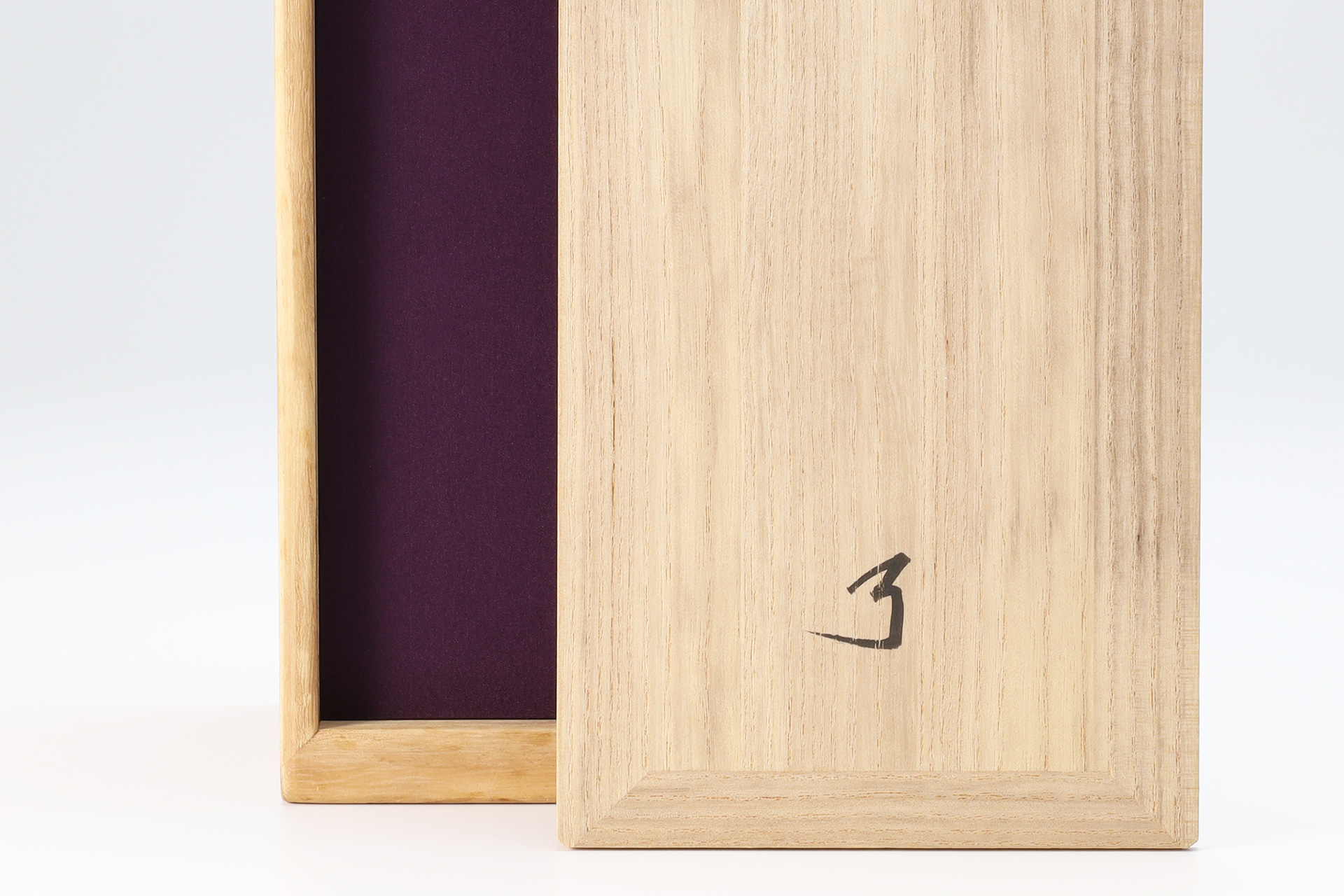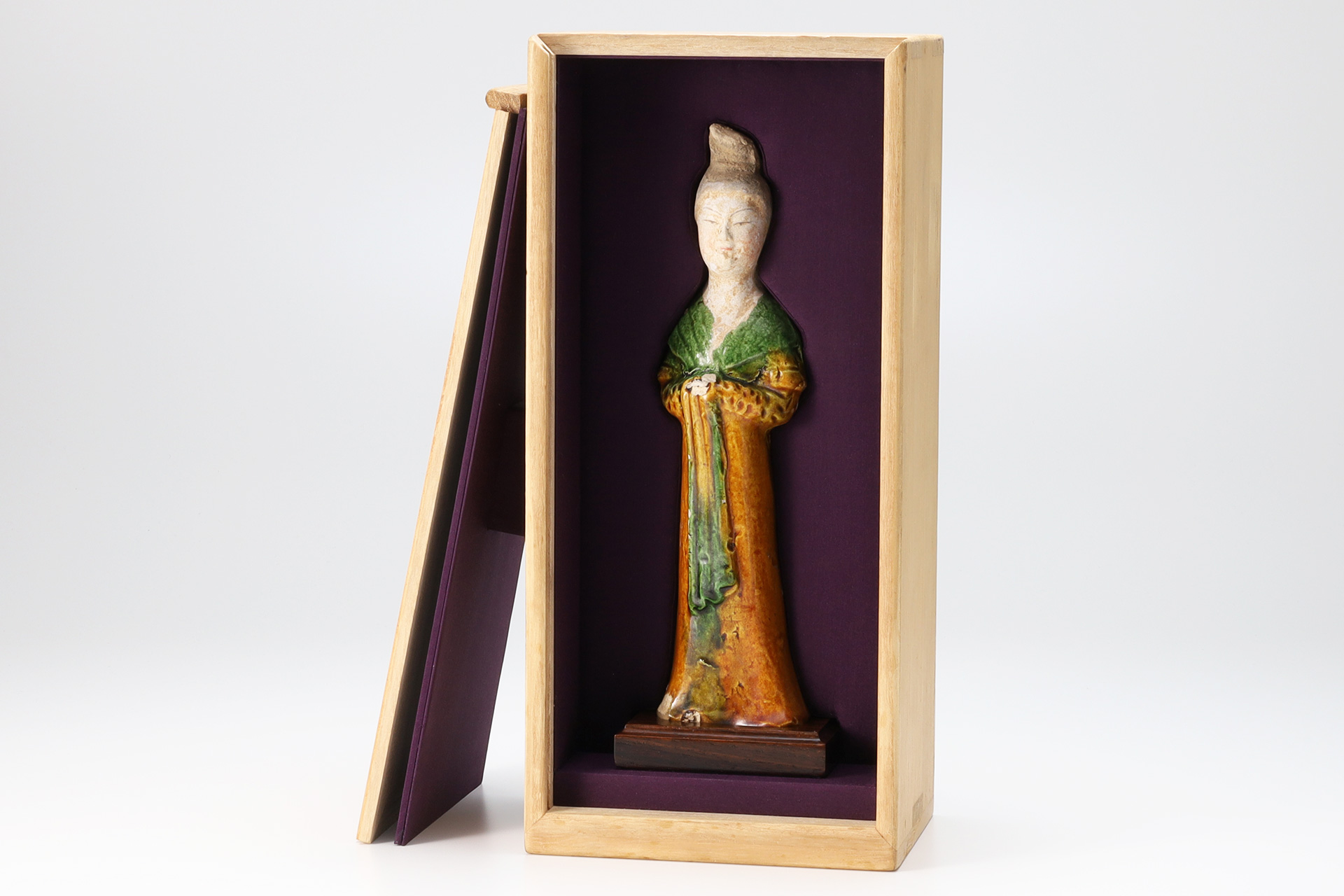This is the elegant and beautiful tang-sancai woman. What is noteworthy is the lustrous color of the glaze, and this is the venerable work that has passed through the aesthetic eye of Ryoichi Fujioka, a researcher of oriental ceramics.
Inquiry
- Product Code
- 240629-2
- Period
- Tang Dynasty
8th century
- Weight
- 363g
- Diameter
- 6.2×5.7cm
- Height
- 23.3cm
- Bottom Diameter
- 6.0×5.6cm
- Description
- Figurine Stand
Paulownia Box(Harikomi Box / Ryoichi Fujioka Appraisal)
- Condition
- Excellent Condition
The glossy three color glaze is beautiful and in excellent condition. There are adhesions on the hand and upper arm(left).
In ancient china, the afterlife was thought to be an extension of the present world. The life sized terracotta warriors surrounding the tomb of the first emperor of the qin dynasty are a representative example, but ceramic products continued to be buried in tombs afterward, even though the scale changed and the size was reduced.
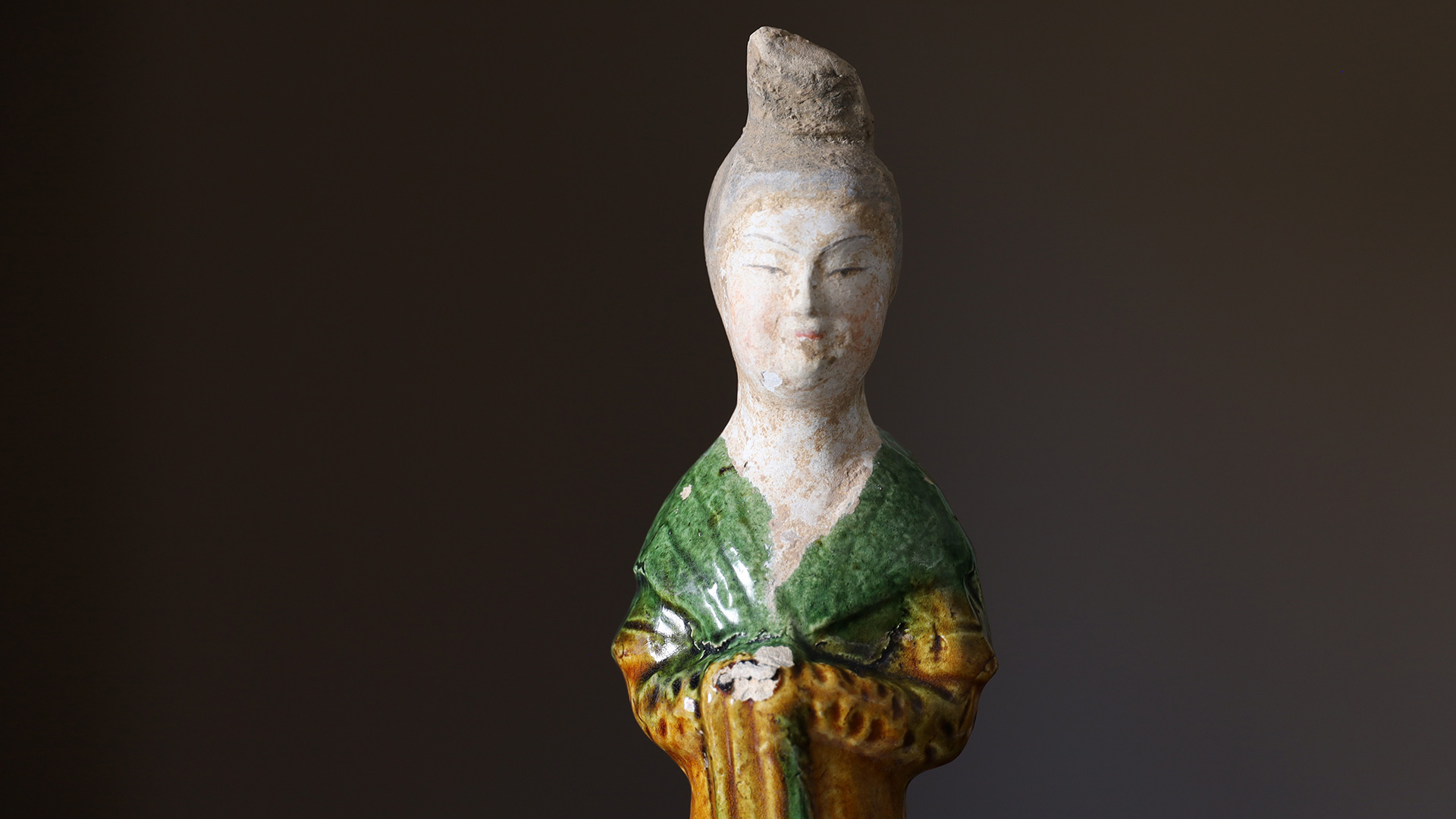
The colored glazes used in tang-sancai use lead as a solvent and copper and iron as coloring agents. Lead glaze has existed since the han dynasty, but at that time there was still no beautiful white base available. With the development of whiter base and base technology that applied white makeup, the beauty of tang-sancai has made dramatic advances.
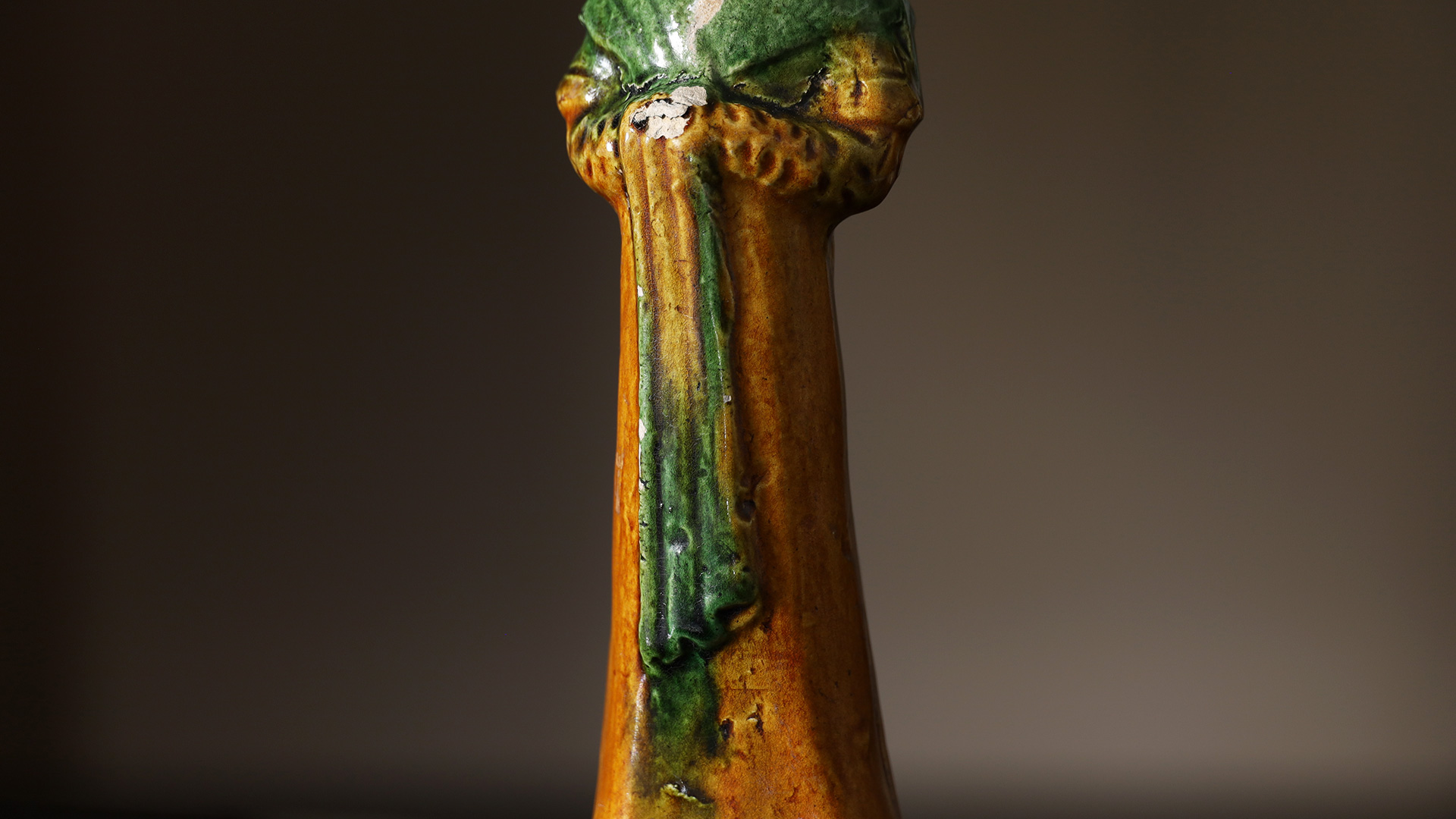
The interior is finished by a specialized upholsterer. It gives the box a neat appearance and makes it easier to place your work inside it.
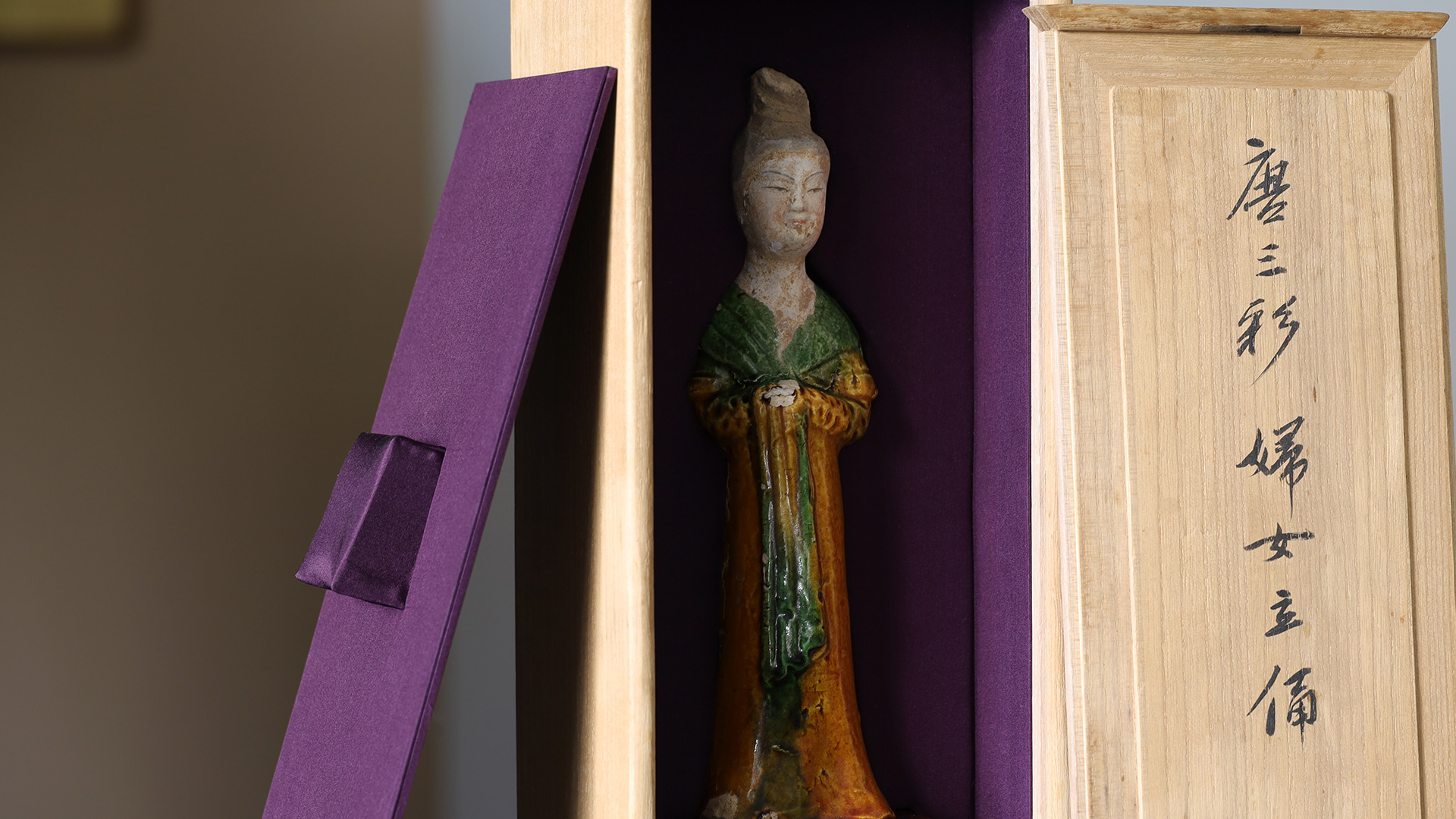
Tang-Sancai
Tang-sancai is a type of three colored pottery that was fired during the tang dynasty mainly in kilns near xi’an (formerly chang’an)and luoyang. As a general rule, they were burial accessories and were not intended for everyday use. It is the work of art that gorgeously decorated the tombs of royalty and nobility, and is also a treasure symbolizing the cultural exchange between east and west along the exotic silk road. In 1905, a large amount of sancai was discovered during railway construction between kaifeng and luoyang, and the discovery of these richly colored burial accessories, which had been virtually unknown until then, astounded the world. It was competitively sought after by collectors in europe and the united states, and quickly became a representative of chinese ceramics. Although there was a trend in japan to avoid burial accessories, collectors who were fascinated by the beauty of sansai gradually appeared, and a new style of ceramics collecting called “Appreciation Ceramics” was established, in which people purely admired the beauty of ceramics. Moritatsu Hosokawa(Eisei Bunko Museum), Koyata Iwasaki(Seikado Bunko Art Museum), Tamisuke Yokogawa(Tokyo National Museum Collection), and Sazo Idemitsu(Idemitsu Museum of Arts)are known as central figures who collected tang-sansai. By far the most examples of excavations have been found in xi’an in shaanxi province and luoyang in henan province, which were home to royalty and high ranking officials, followed by yangzhou in jiangsu province, which was a trading port. With the progress of excavations, the excavated area continues to expand, and it has spread to liaoning, hebei, shanxi, shandong, gansu, hubei, anhui, jiangxi, and other provinces, making it a fairly wide ranging distribution. After shaping the highly plastic clay, it is bisque fired at a high temperature of approximately 1,200℃. After cooling, a basic glaze(transparent glaze)is applied, green or brown lead glaze is added, and low temperature firing is performed at approximately 800-900℃. The colored glaze flows or bleeds because the base glaze becomes the base melt during firing, and the parts of each glaze that come in contact with each other fuse together, giving off a gorgeous color. Basically, there are three colors(white, green, and brown), but works that include blue and two colors with fewer colors are also collectively referred to as “Tang-Sansai”. It had a great influence on the ceramic industries of surrounding countries, including its own country’s “Liao-Sancai” and Japan’s “Nara-Sancai”, as well as “Silla-Sancai” and “Bohai-Sancai”.
Ryoichi Fujioka 1909-1991
Ryoichi Fujioka was born in osaka prefecture.
In 1932, after graduating from Otani University.
In 1934, became the Researcher of the Tokyo Imperial Museum.
In 1938, became the Assistant Inspector of the Tokyo Imperial Museum.
In 1943, became the Staff of the Southern Museum, Expatriates of the Taiping Museum.
In 1947, became the Curatorial Division Chief of the Kyoto National Museum.
In 1972, became the Researcher of the Kyoto National Museum, Expert member of the Council for the Protection of Cultural Properties.
In 1973, became the Researcher of the Nara National Museum.
In 1986, became the Special Consultant of the Sen-oku Hakuko Kan Museum.
He also served as the director of the Fujita Museum of Art, the Hakutsuru Fine Art Museum, and the Itsuo Art Museum, and was active as the researcher of the history of oriental ceramics.
